'Smart grids'
Referente mundial en 'smart grids'
La descarbonización de la economía y la innovación digital traen de la mano novedosas redes de distribución conocidas como 'smart grids', un salto tecnológico clave en nuestra apuesta por la transición energética.

La bidireccionalidad, flexibilidad, digitalización y automatización de las smart grids hacen posible un nuevo mapa interconectado que responde a las necesidades de los usuarios y productores de energía. Las redes eléctricas inteligentes garantizan además la incorporación de más renovables y se posicionan como un pilar vital para la transición energética.
Por ello, en nuestro plan estratégico tenemos previsto invertir 21.500 millones de euros en redes en Estados Unidos, Reino Unido, Brasil y España, lo que representa el 60% de la inversión neta. De esta cuantía más de 6.500 millones están destinados a las redes de transporte. De este modo, las redes garantizarán la integración de la nueva capacidad renovable y permitirán implantar nuevas soluciones y servicios distribuidos.
¿Qué son las 'smart grids' o redes eléctricas inteligentes?
Las smarts grids son aquellas redes eléctricas que pueden integrar de forma inteligente y dinámica las acciones de todos los usuarios conectados a ellas —los que generan energía, los que la consumen o los que hacen ambas cosas— con el fin de suministrar electricidad de manera eficiente, sostenible, económica y segura.
Las smart grids incorporan a su diseño tradicional la tecnología digital para facilitar el intercambio bidireccional de energía e información. Lo hacen gracias a Internet, tecnologías de la información y la comunicación, sistemas de control y aplicaciones informáticas y domóticas de la más puntera innovación.
Este tipo de redes abarcan toda la infraestructura tecnológica que va a necesitarse, desde la generación de la energía, su transporte y distribución, hasta el almacenamiento eléctrico y el consumo de la energía generada.
Así, la red inteligente es capaz de dar respuesta a las necesidades de demanda de electricidad de los ciudadanos y a las potenciales incidencias que ocurran. Las smart grids son capaces de integrar instalaciones renovables de diverso tamaño y, gracias a su condición bidireccional, el usuario puede ser consumidor y productor: puede producir energía y venderla a usuarios industriales o comerciales.

¿Cómo funcionan las 'smart grids'?
El funcionamiento de la red inteligente es más complejo que el de la red tradicional, ya que emplea la telegestión al incorporar sistemas de información y control automatizados que responden a las fluctuaciones de la producción de energía y de la demanda. Gracias a ello, se tiene información del consumo energético en todo momento y se hace un uso más responsable de todo el ciclo, además se conoce el estado de cada nodo, segmento y elemento y aumenta la eficiencia y eficacia operacional de las líneas.
Avanzamos hacia la red eléctrica inteligente del siglo XXI
-
Iberdrola acoge la jornada Enlit on the Road en Valencia
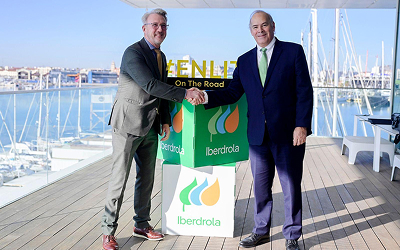
-
La CMA aprueba la adquisición de Electricity North West por parte de Iberdrola

-
Galán presenta planes de inversión en EE.UU. por más de 20.000 millones de dólares en infraestructuras de redes a 2030
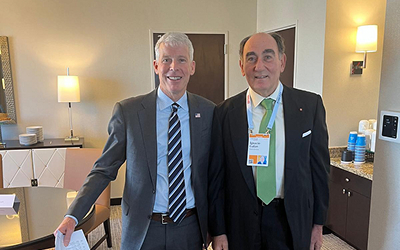
-
La Embajada de Finlandia visita el HUB de Iberdrola en Bilbao

-
Iberdrola y Enlit Europe dan sus primeros pasos para la celebración en Bilbao en noviembre de la gran cita europea de la industria
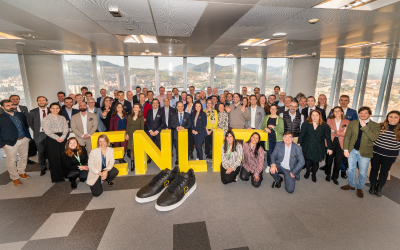
-
Iberdrola inicia la construcción de la superautopista eléctrica submarina Eastern Green Link 1

-
El Instituto Eléctrico Edison destaca la actuación de las cuadrillas de Iberdrola en las tormentas extremas de Estados Unidos
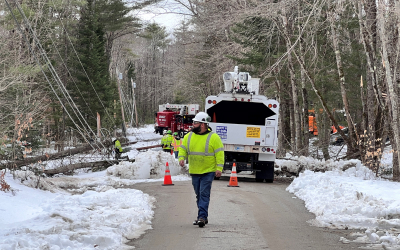
-
Iberdrola invierte 100 millones de euros en el rediseño de su red eléctrica afectada en Valencia
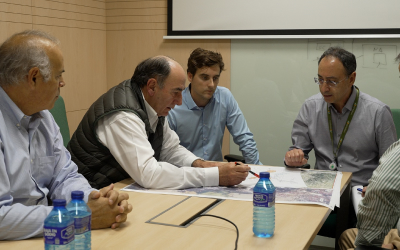
-
Iberdrola designa a 19 empresas como socios preferentes en sus contratos de Redes en Reino Unido
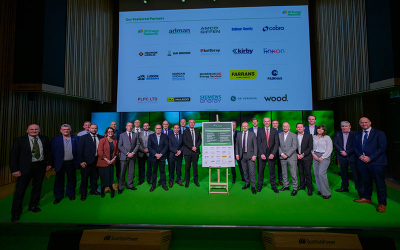
-
Iberdrola obtiene la autorización del regulador británico para el proyecto Eastern Green Link 1

-
El BEI e Iberdrola firman un préstamo de 500 millones de euros financiados con fondos Next Generation para inversiones en expansión de las redes eléctricas inteligentes en España

-
Finalizamos con antelación la instalación de nuestro proyecto de transporte eléctrico en Brasil
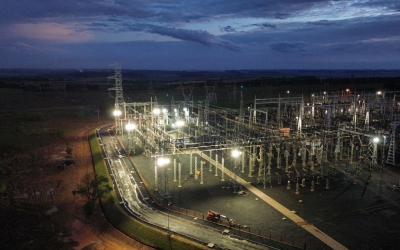
-
La transición energética es clave para la competitividad de Europa
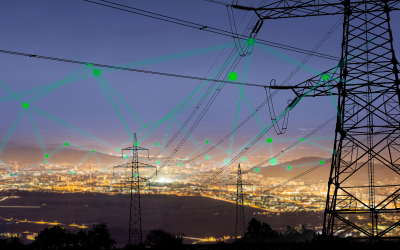
-
Presentamos Smart Grids Academy, una plataforma internacional de formación en redes eléctricas inteligentes
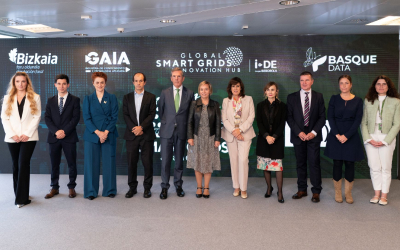
-
Firmamos un préstamo de 120 millones junto al BEI para el desarrollo de proyectos de innovación energética en España
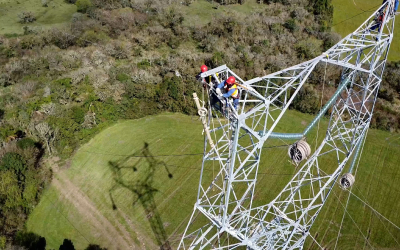
-
El perro robot “Sparky” de Iberdrola reconocido por mejorar la calidad de la red con robótica innovadora
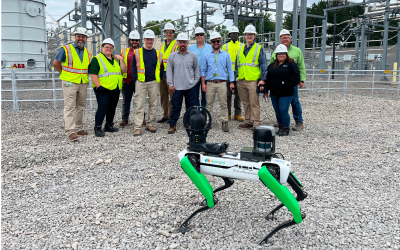
-
Iberdrola selecionada para contrato de capacidade federal de 385 milhões de euros no Maine

-
Compramos la tecnológica británica Derryherk para impulsar la eficiencia de nuestras redes en Reino Unido
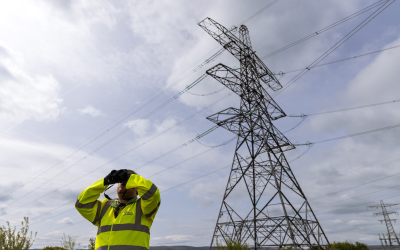
-
Instalamos más de 700.000 contadores inteligentes en Estados Unidos
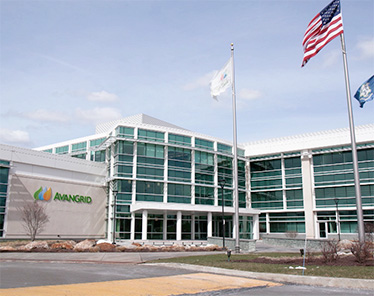
-
Compramos la distribuidora ENW por 5.000 millones de euros

-
Apostamos por la digitalización y la innovación en redes

-
Préstamo verde de 700 millones de euros para la expansión de redes eléctricas en España

-
Avangrid lidera un proyecto piloto de aplicación de IA en la revisión de subestaciones

-
Lideramos el autoconsumo en España

-
Colaboraremos con BCAM en el proyecto Innovation Data Space de IA

-
Lanzamos en Reino Unido la mayor licitación por más de 6.200 millones

-
Eastern Green Link I, en Reino Unido, adjudica contratos por valor de 1.800 millones de libras


Principales ventajas de las 'smart grids'

Mayor eficiencia de la red y calidad de suministro
A través de la telegestión, se puede administrar de forma remota y con rapidez todo lo relacionado con el punto de suministro y los servicios.

Consumidor más conectado
Los consumidores conocen en tiempo real, por ejemplo, sus curvas de consumo o cómo se distribuye el consumo de energía eléctrica.

Pieza clave en la transición energética
Facilitan la descarbonización y electrificación de la economía, con la integración de renovables, movilidad sostenible y autoconsumo.

Mayor eficiencia de la red y calidad de suministro
A través de la telegestión, se puede administrar de forma remota y con rapidez todo lo relacionado con el punto de suministro y los servicios.

Consumidor más conectado
Los consumidores conocen en tiempo real, por ejemplo, sus curvas de consumo o cómo se distribuye el consumo de energía eléctrica.

Pieza clave en la transición energética
Facilitan la descarbonización y electrificación de la economía, con la integración de renovables, movilidad sostenible y autoconsumo.
Tareas y retos de las 'smart grids'
El nuevo modelo energético tiene varias tareas por delante para construir ciudades más inteligentes y con una buena calidad del aire al estar libre de emisiones.
¿Qué datos podemos conocer gracias a las 'smart grids'?
Gracias a la red eléctrica inteligente podemos identificar las zonas geográficas en las que se consume más energía y aquellas en las que ocurren más interrupciones. Además, conoceremos qué equipos sufren mayores averías y reconoceremos el tipo de incidencia dentro de la red eléctrica. También se puede detectar el fraude. Para una mejor eficiencia energética, las smart grids ofrecen previsiones de demanda y generación de energía y, gracias a la calidad de onda, la calidad de suministro es mejor. También nos permite conocer el mantenimiento necesario de los activos en red.

Nuestros proyectos más emblemáticos en
redes inteligentes
-
Eastern Green Link 1: una superautopista eléctrica submarina para unir el Mar del Norte con Inglaterra

-
1.700 kilómetros de línea eléctrica en Brasil: Nuestro mayor proyecto de redes en el mundo

-
BeFlexible prueba en distintos países europeos su estrategia de flexibilidad energética

-
Western Link: el proyecto de tendido de cableado eléctrico submarino más largo del mundo
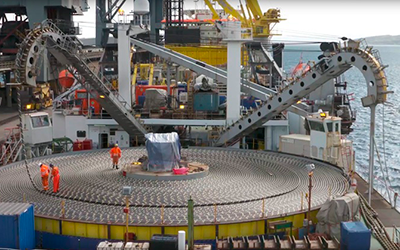
-
Proyecto STAR: referente de eficiencia en inversiones en redes y contadores inteligentes

-
La revolución de las redes eléctricas, el proyecto PRIME

Iberdrola, referente mundial en 'smart grids'
En el Grupo Iberdrola consideramos las redes un factor clave tanto para la electrificación de la economía como para la dinamización de los territorios en los que estamos presentes. Es por ello que consideramos los activos regulados —junto con las energías renovables— factores clave de nuestra estrategia.
Un 85% de las inversiones en redes van dirigidas a mercados con marcos cerrados para los próximos años y el 80% del beneficio bruto de este negocio está protegido de la inflación y de los tipos de interés. Estas inversiones nos permitirán incrementar la base de activos hasta los 54.000 millones de euros para 2026, 12.000 millones de euros más que en 2023 y un 38% más que en 2022.
Ya operamos uno de los sistemas de distribución más importantes del mundo, con más de 1,3 millones de kilómetros de distribución y transporte, más de 4.500 subestaciones y más de 1,6 millones de transformadores, construidos y operados para suministrar un servicio de alta calidad y fiabilidad a más de 33,67 millones de puntos de suministro de electricidad.
Desde Iberdrola continuamos trabajando en la modernización, digitalización y automatización de las redes, como elemento clave para mejorar la calidad del sistema de distribución y garantizar la masiva incorporación de renovables en un futuro próximo, así como para promover la electrificación de la movilidad, los edificios y la industria. Al mismo tiempo, fomentamos el empleo en redes eléctricas como un área en expansión con enorme proyección para diversos perfiles profesionales.
Creemos firmemente que la transición a un sistema descarbonizado y plenamente renovable no es posible sin contar con redes eléctricas de transporte y distribución modernas y flexibles, capaces de integrar eficientemente la nueva potencia libre de emisiones. Por ello, en los últimos años desde el Grupo Iberdrola hemos instalado cerca de 15 millones de contadores inteligentes a nivel mundial y se han incorporado a la red capacidades de telegestión, supervisión y automatización. Para finales de 2025 se habrán instalado más de 21 millones de contadores inteligentes y el 83 % de nuestros activos estarán en países con rating A. A cierre de los nueve meses de 2024, cerca del 80 % de nuestras redes de alto y medio voltaje eran ya redes inteligentes.
De este modo, respondemos a las nuevas tendencias en la relación con nuestros clientes, ofreciéndoles productos y servicios más personalizados y una gestión más activa de su consumo eléctrico. Asimismo, también realizamos en paralelo un gran esfuerzo por minimizar el impacto de nuestras instalaciones en el medio ambiente, al tiempo que lanzamos retos a través del Programa de start-ups - PERSEO en busca de soluciones innovadoras para reducir todavía más ese impacto.
Todo este esfuerzo ha llevado a nuestro Grupo a convertirse actualmente en líder mundial en desarrollo e implantación de redes inteligentes.
Si quieres conocer las distribuidoras por países del Grupo Iberdrola, puedes encontrarlas en los siguientes enlaces:

El 'Global Smart Grids Innovation Hub'
Para seguir liderando la transición energética, hemos creado un centro mundial de innovación en redes inteligentes: el Global Smart Grids Innovation Hub. Su objetivo es ser un referente mundial y actuar como plataforma tractora de la innovación, combinando su capacidad tecnológica con la de proveedores, colaboradores y start-ups de todo el mundo. La iniciativa agrupa el potencial innovador de más de 200 profesionales en el desarrollo de proyectos de I+D+i.
Descubre el 'Global Smart Grids Innovation Hub'El 'Global Smart Grids Innovation Hub'
Para seguir liderando la transición energética, hemos creado un centro mundial de innovación en redes inteligentes: el Global Smart Grids Innovation Hub. Su objetivo es ser un referente mundial y actuar como plataforma tractora de la innovación, combinando su capacidad tecnológica con la de proveedores, colaboradores y start-ups de todo el mundo. La iniciativa agrupa el potencial innovador de más de 200 profesionales en el desarrollo de proyectos de I+D+i.
Descubre el 'Global Smart Grids Innovation Hub'Las innovaciones que hacen posible las 'smart grids'
¿Qué diferencia a las 'smart grids' de la red eléctrica tradicional?
Durante siglos, el sistema energético ha respondido a un modelo analógico y unidireccional: la energía se producía en centrales de generación eléctrica y se distribuía a los consumidores a sus viviendas, comercios, fábricas y uso público en las ciudades. Pero la tecnología y la transición energética hacia una economía descarbonizada están ofreciendo otras muchas posibilidades, que solo son factibles haciendo del sistema circulatorio del sistema eléctrico, que son las redes, unas infraestructuras más robustas y, sobre todo, más flexibles e inteligentes.
La red eléctrica tradicional es estática y unidireccional, mientras que la dinámica de las smart grids es bidireccional, existiendo comunicaciones entre los suministros y los centros de control, aumentando así la eficiencia y el ahorro energético. Con la red tradicional no hay apenas interacción con los consumidores, mientras que con la red inteligente la interacción es muy generalizada. El medidor de energía de la red convencional es electromecánico y el de la inteligente es digital. El mantenimiento de ambas también difiere, si la red tradicional exige un chequeo manual de equipos, con las smart grids el monitoreo puede hacerse a distancia.
¿Qué diferencia a las smart grids?


- Planta energía nuclear
- Planta energía térmica
- Fábricas
- Planta hidroeléctrica
- Ciudades y edificios
- Planta energía eólica
- Planta energía solar
- Vehículos eléctricos
- Casas inteligentes
Las 'smart grids', sostenibles y respetuosas con el medio ambiente
Sin renovables no habrá transición verde y sin las redes que hacen posible su gestión e integración en el sistema no podría haber renovables. Tampoco sería posible la movilidad sostenible que viene, basada en vehículos que utilizan como combustible la electricidad verde. Los hilos invisibles de las smart grids, que garantizan el correcto funcionamiento de un sistema energético fiable y sostenible, son un eje fundamental del cambio hacia el nuevo paradigma económico verde.
Las smart grids ayudan a reducir las emisiones de gases de efecto invernadero, combatiendo así el calentamiento global. Además, al contar con un sistema eléctrico que permite la optimización del consumo y la producción de energía, facilitan la eficiencia energética. Asimismo, los consumidores pueden conocer su consumo en tiempo real, lo que les permite ahorrar energía y reducir su factura a la par que reducen el impacto ambiental pues ya no hay pérdidas de energía. También son la solución al desperdicio de energía, ya que optimizan al máximo las fuentes de energía aplicando a diario medidas de eficiencia energética en hogares, negocios e industrias.
Las smart grids incluyen en su funcionamiento fuentes de energía renovable. Al conocer el consumo, también se puede pronosticar la producción necesaria a largo plazo usando específicamente energías renovables y desechando el uso de las no renovables que se usan principalmente en momentos de desabastecimiento

Más sobre smart grids
Microrredes inteligentes: el potencial para una energía sostenible
Las microrredes son pequeños circuitos autosuficientes capaces de suministrar electricidad a comunidades específicas, normalmente alejadas de los grandes centros urbanos.
Descubre las microrredes inteligentesMicrorredes inteligentes: el potencial para una energía sostenible
Las microrredes son pequeños circuitos autosuficientes capaces de suministrar electricidad a comunidades específicas, normalmente alejadas de los grandes centros urbanos.
Descubre las microrredes inteligentes
















